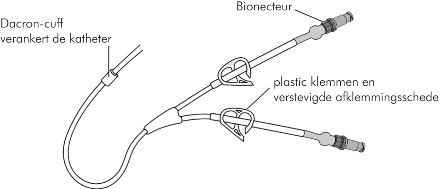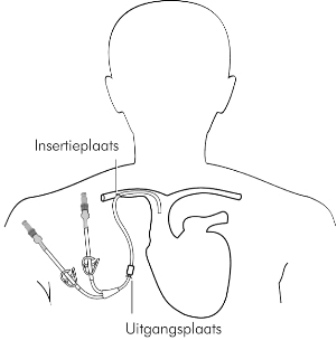The brochure Placing a line explains how lines are inserted. The brochure Coping with a line (Hickman, Broviac, Powerline) provides information on how to look after a line and explains how you can recognize problems and what to do if they occur. Please note both brochures are currently only available in Dutch. The most important information is provided below.

The advantage of this line is that it eliminates the need for your child to repeatedly have an intravenous catheter (IV) inserted. The line is placed under anesthesia and can remain in place for months. There are different types of lines: The doctor determines which line is best for treating your child.
A central venous catheter is a flexible line that is inserted into a large blood vessel that leads directly to the heart. A small portion of the line protrudes outside the skin. The line has a protective cap onto which an IV line or a syringe can be fastened.
There are various types of lines with one, two or three exit lines. The doctor determines which line is best for treating your child.

The pediatric surgeon inserts the line through an incision near the collarbone/in the neck. This procedure takes place under anesthesia in the operating room of the Wilhelmina Children's Hospital.
Should you need any further information, please feel free to ask.
Also watch the animation video for children about coping with a line (only in Dutch):


